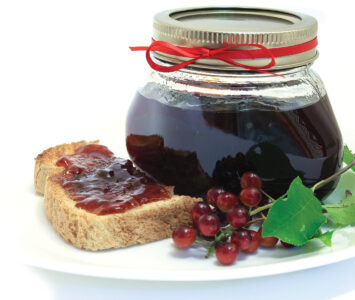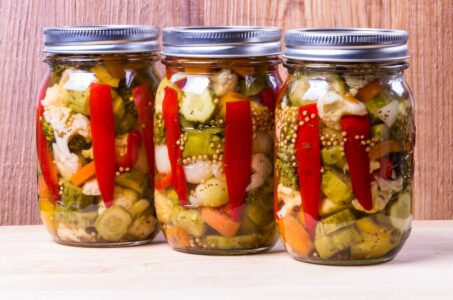Gardeners have been growing asparagus (Asparagus officinalis) for more than 2,000 years, and this sweet, slender veggie’s staying power is no surprise: A well-maintained asparagus bed will start bearing one year after planting and will stay productive for 10 to 15 years.
A hardy perennial adapted in Zones 3 to 8, asparagus grows best in well-drained soil with a near-neutral pH between 6.5 and 7.5. The edible part of the asparagus plant is the young stem shoot, which emerges as soil temperatures rise above 50 degrees Fahrenheit in spring.
Types to Try
Because asparagus stays productive for so long, it’s important to plant the best variety available for your area. In cold climates, ‘Guelph Millennium’ and other varieties that emerge late often escape damage from spring freezes. In warm climates, early, heat-tolerant varieties such as ‘Apollo’ and ‘UC-157’ produce well before the weather turns hot. Gardeners in Zones 4 to 6 have a wider selection of varieties, including ‘Jersey Giant,’ ‘Jersey Knight’ and other hybrids bred in New Jersey for improved disease resistance and better productivity.
When to Plant
Plant asparagus crowns (dormant roots of 1-year-old plants) in spring at about the same time you would plant potatoes, but don’t rush to plant them if your soil is still cold. A few varieties, such as open-pollinated ‘Purple Passion’ and hybrid ‘Sweet Purple,’ can be grown from seed. Start seeds indoors in spring and set out the seedlings when they are 12 to 14 weeks old, just after your last spring frost. Start with asparagus crowns, however, to eliminate the year of tedious weeding that comes with starting from seed.
How to Plant
Choose a site with fertile soil that’s clear of perennial weeds and grasses. A single row of asparagus plants set 15 inches apart will fill in to form a 24- inch-wide bed, or you can grow a double row in a 36-inch-wide bed. Locate asparagus along the back or side of your garden, as 5-foot-tall asparagus fronds will shade any nearby plants. A bed of 25 mature plants will produce about 10 pounds of asparagus per year.
Asparagus craves phosphorus, which is usually abundant in composted manure and in compost made from kitchen waste. Add a 2-inch layer of rich, weed-free compost to your soil before planting. Dig a trench 4 inches deep and 10 inches wide in the amended soil and arrange the crowns in the bottom, about 15 inches apart. Refill the trench without stepping on the bed.
Maintaining Your Bed
Controlling weeds during the first two seasons will require rigorous weeding by hand. Pull out weeds early and often, and mulch with hay, grass clippings or another organic material to suppress weeds and maintain moisture. Weeds will become less of an issue as the plants fill in.
In early winter, after several hard freezes have damaged your asparagus fronds, cut them off and compost them to interrupt the life cycles of insects and diseases. Fertilize the bed with a 1-inch layer of rich, weed-free compost or manure topped with 3 inches of straw, rotted sawdust or another weed-free mulch. Clean spears will push up through the mulch in spring. Fertilize your asparagus again in early summer after you’ve stopped harvesting spears. You can top-dress with a balanced organic fertilizer, or scatter another inch of rich, weed-free compost over the decomposing mulch.
Harvesting and Storage
The exact dates of your spring picking season can vary by two weeks or more because of variations in soil temperature from year to year. Snap off spears longer than 4 inches at the soil line as soon as they appear in spring. As long as a new planting grew vigorously its first season (and your growing season is not extremely short), you can harvest spears for two weeks after your planting is a year old.
The next season, harvest all spears that appear for the first four weeks of active growth. In your third season you can harvest asparagus for six weeks, and by the fourth year the plants will be strong enough to tolerate a full eight-week harvest season.
Promptly refrigerate your harvested asparagus. You can pickle, dry, or blanch and then freeze bumper crops.
Growing Tips and Ideas
- Get Psyched for Your Spears. Prepare your bed when you order your asparagus crowns so you can plant them as soon as they arrive.
- Choose Male Plants. Most hybrid asparagus varieties are able to produce seven or more spears per mature plant because they are male plants that don’t expend energy producing seeds. However, if you’re growing open-pollinated or hybrid varieties that do include seed-producing female plants, dig out female plants to limit reseeding. Asparagus seedlings are difficult to pull and may become bothersome weeds in some climates.
- Tuck Them In. Freezing temperatures ruin asparagus spears, so harvest yours before any harsh spring weather. During the first weeks of the harvest season, covering beds with row cover tunnels held aloft with hoops can help limit damage from the cold.
- An Edible Aesthetic. Ferny fronds of asparagus are a beautiful addition to edible landscaping beds, and asparagus stems make great filler material in flower arrangements.
Outsmart Asparagus Beetles
Two species of asparagus beetles damage spears and fronds throughout North America: the common asparagus beetle (black, white and red-orange) and the spotted asparagus beetle (red-orange with black spots), which are both about a third of an inch long.
Asparagus beetles overwinter in plant debris, so removing fronds in winter will reduce their numbers. Lady beetles and several small wasps are major asparagus beetle predators.
Handpick adult asparagus beetles early in the morning when it’s too cool for them to fly. Asparagus beetle eggs look like stubby, brown hairs. Wipe them off of spears with a damp cloth. After they’ve begun feeding on fronds, asparagus beetle larvae (soft, gray, slug-like creatures with black heads) are unable to crawl back up plants if swept off with a broom. Many gardeners allow their poultry to clean up the asparagus bed for three to five days at the end of the harvest season to rid the plot of overwintering adults.
If you have an asparagus beetle problem but don’t have poultry, set aside a section of your asparagus to serve as a spring trap crop. Don’t cut the spears in spring within the plot, but patrol often to collect as many asparagus beetles as you can. In late summer, cut the fronds 2 inches from the ground and compost them. In three weeks or so, you can harvest a fall crop of spears from your trap crop plot.
In the Kitchen
Delicate spears of asparagus are welcome at every meal. For breakfast, asparagus pairs beautifully with bacon, eggs, ham, or melon. Layer lightly steamed spears onto lunch sandwiches, or incorporate them into pasta salads, quiches, or bread puddings. Asparagus risotto can round out dinner, or you can serve asparagus roasted, braised, or grilled as a side dish.
Asparagus cooks quickly. Toss spears with olive oil, salt, and pepper, and then grill for just two to three minutes. You can make roasted asparagus by cooking oiled and seasoned spears in an open pan in an oven at 450 degrees Fahrenheit for eight to 10 minutes.
Asparagus is an excellent source of folacin, a B vitamin that helps keep the circulatory system strong, and it’s a good source of potassium and vitamin C. Claims that asparagus fights cancer are based on its high level of glutathione, a potent antioxidant. Light cooking (such as steaming) for eight to 10 minutes increases the bioavailability of asparagus’ healthful compounds.
(For details on growing many other vegetables and fruits, visit our Crop at a Glance collection page.)
Contributing editor Barbara Pleasant gardens in southwest Virginia, where she grows vegetables, herbs, fruits, flowers and a few lucky chickens.









